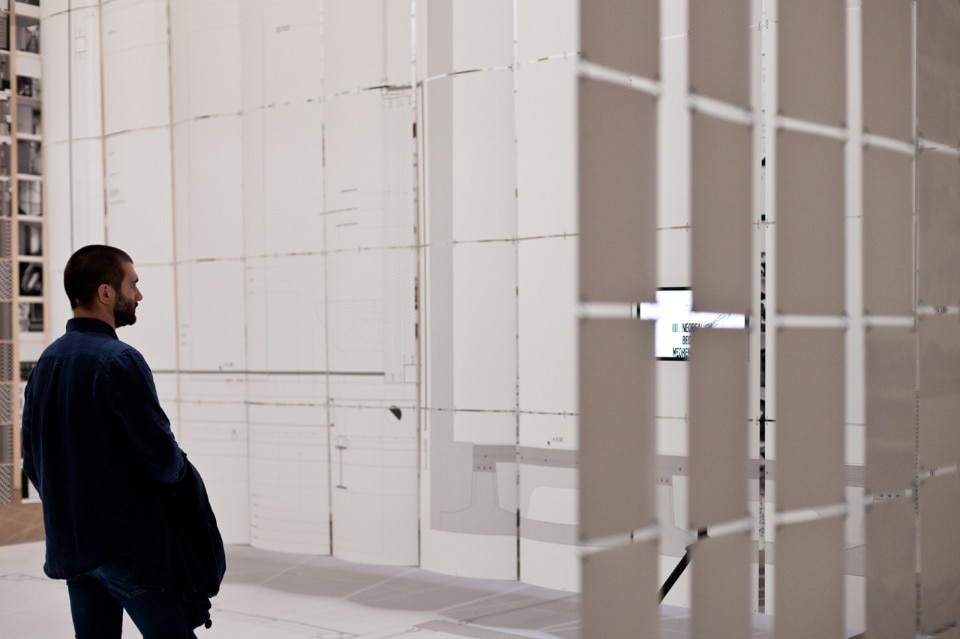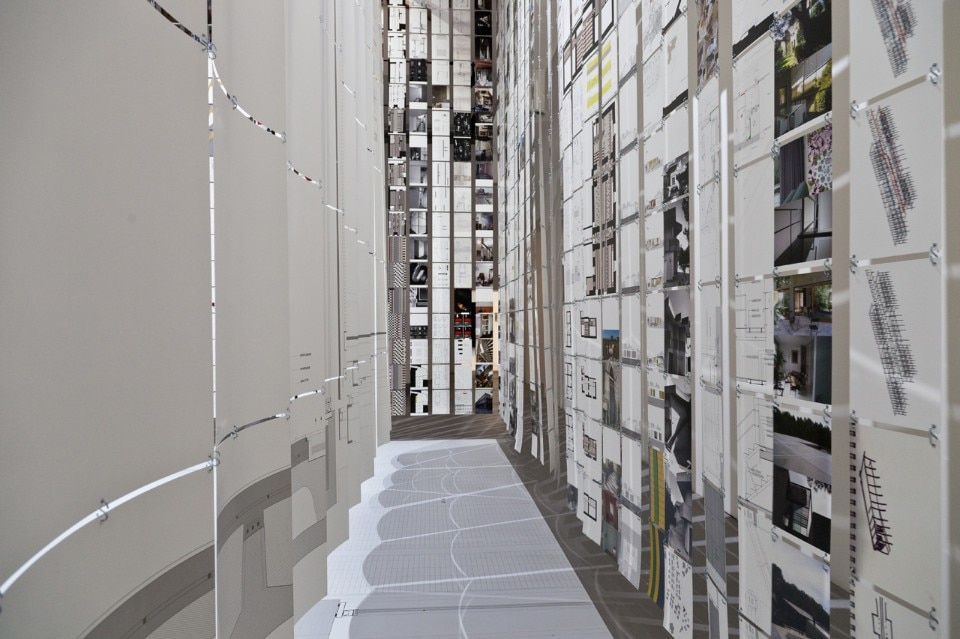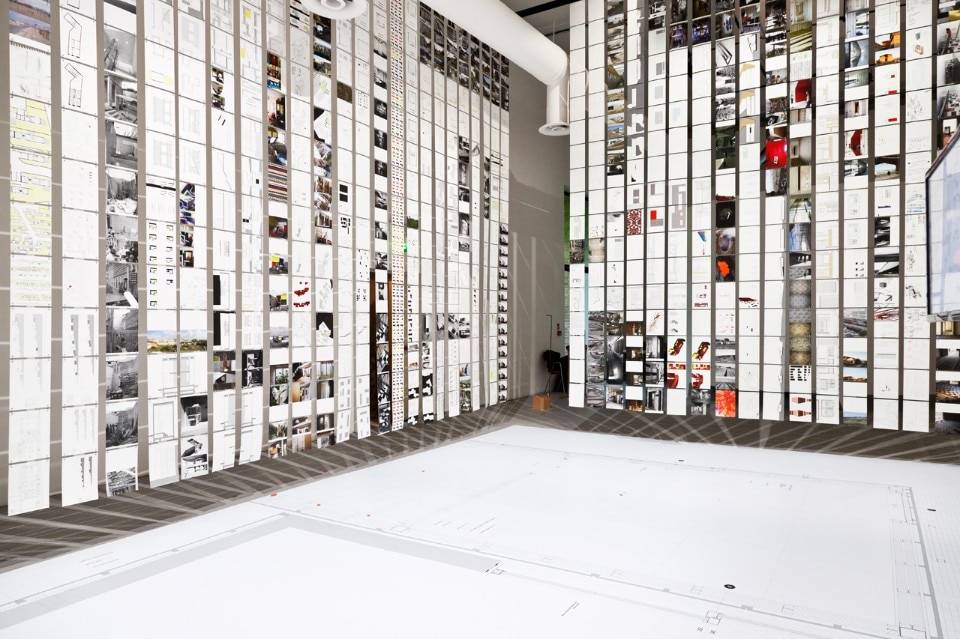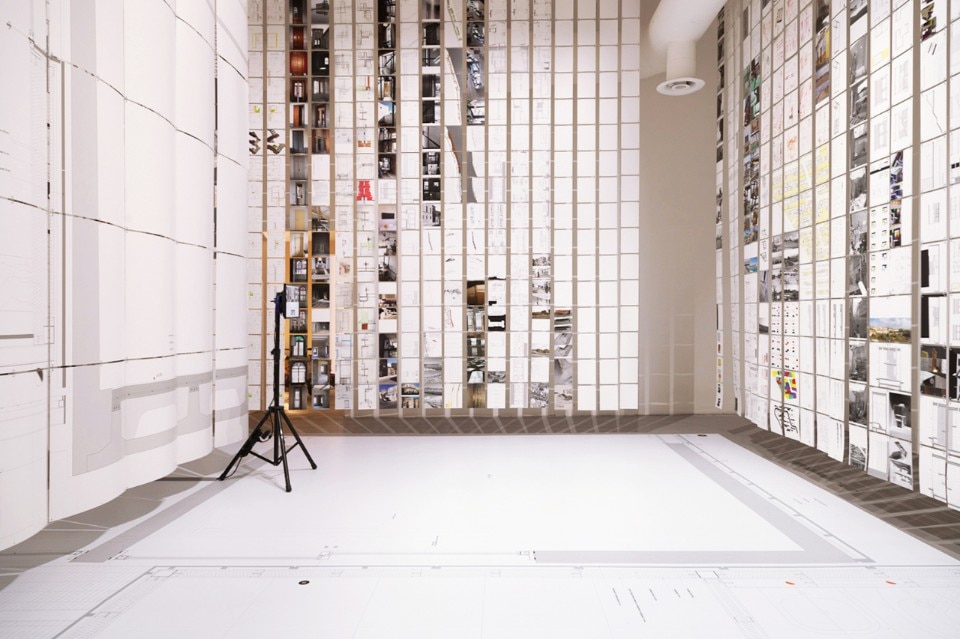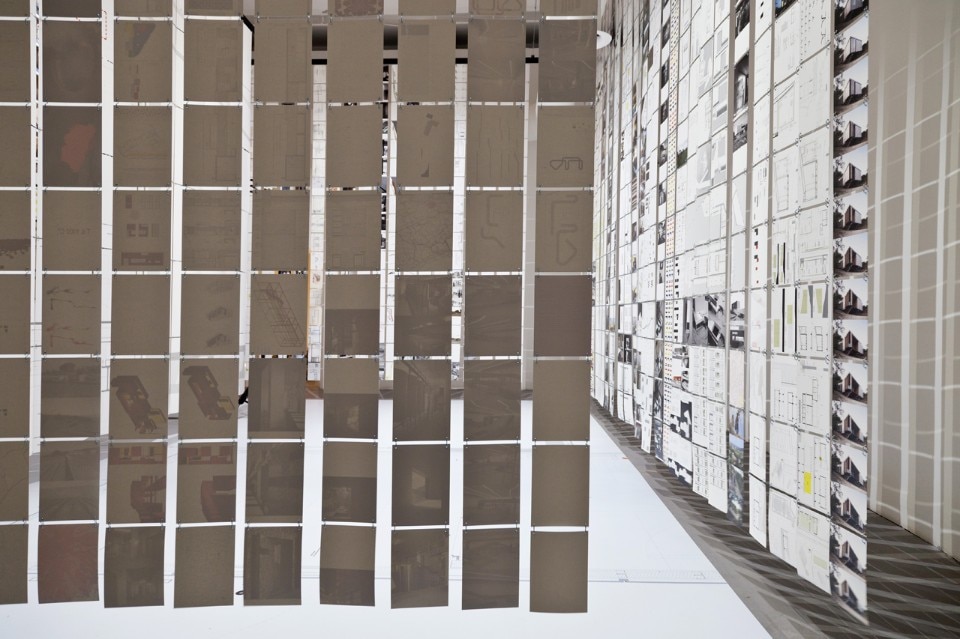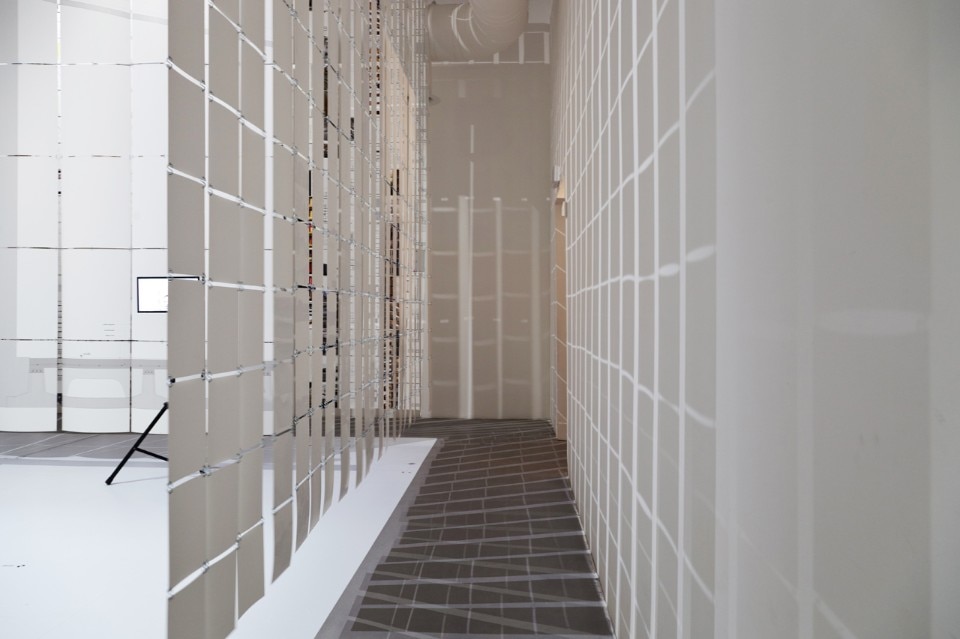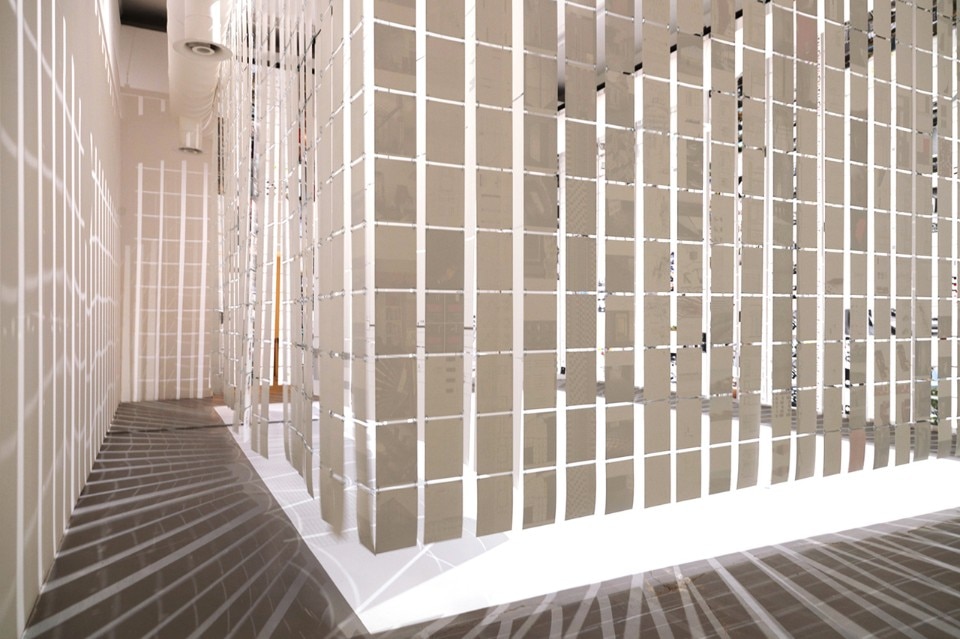
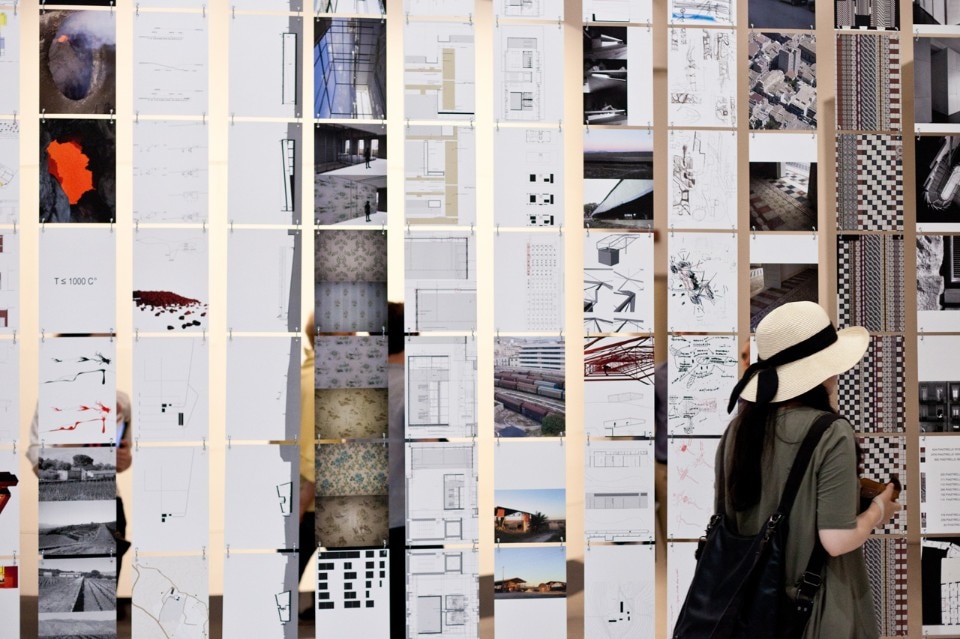
Brusque, sensitive and generous, just like her character, Maria Giuseppina serves up an abundant anthological exhibition of her work, not in a trite catalogue raisonné but in a random combination of sheets of paper (as in her recent book Loose Hands, Lars Mueller, 2014).
Seen from the outside, the sheets are white but inside the space they convey the significance of the battle. One thousand nine hundred and thirty-eight A4 sheets of paper printed on just one side contains the tools of a narration: texts, reflections, processes, drawings and images paint a fresco of a path that advances through multiple territories, cities and inhabited spaces. The positioning in space and size of the paper make it impossible to read each one or understand each project but they do convey the sense and significance of the battle (M.G. Grasso Cannizzo)
